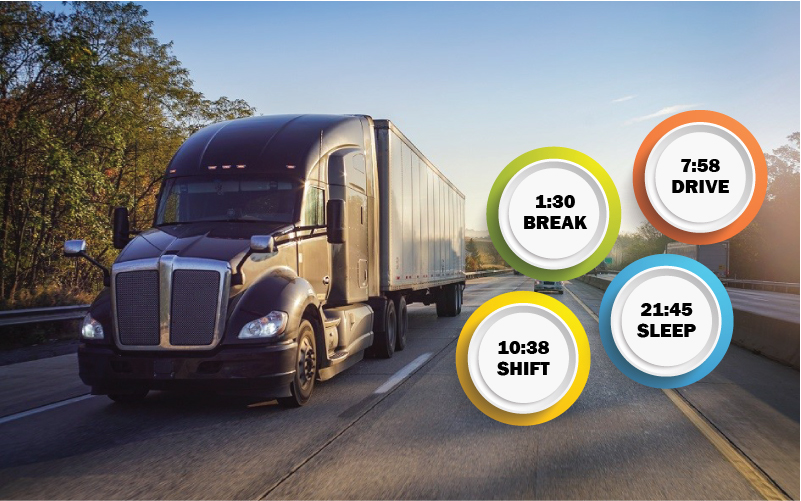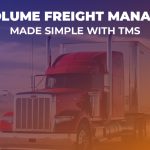
Moving goods and materials across the country is a difficult task. Truck drivers spend a lot of time alone on the road, and weariness is common. The US Department of Transportation sets limitations on how much time truckers can spend behind the wheel and requires them to keep account of their driving hours.
Many elements go into a successful fleet management strategy. Understanding the challenges is key to finding solutions. Many factors need to be considered when you’re trying to decide what tools can help your business operate more efficiently: the state of technology, the needs of your drivers, and your bottom line.
Truck logs and ELD
The Electronic Logging Device (ELD) rule became mandated for commercial vehicle drivers on December 18, 2017. This means that paper records are no longer sufficient, and commercial trucks must be equipped with ELDs. Also known as electronic logbooks or e-logs are small electrical devices that are connected to the truck’s engine and track how long it has been moving. It’s a software program designed to make it easier for truckers and transportation businesses, as well as their drivers, to comply with a long-standing federal mandate. Drivers who are detected driving trucks without ELDs will be cited, and safety inspectors may take these trucks off the road. Click here to get more details.
ELD Functions
- Date, time, location information, engine hours, vehicle miles, and identifying information for the driver, authenticated user, vehicle, and motor carrier are all automatically recorded by an ELD at predetermined intervals.
- It synchronizes with the vehicle’s engine to record vehicle parameters and allows entries relating to a driver’s duty status record (RODS).
- The data output file from the ELD is usually a regular comma-delimited file that a driver can import into Microsoft Excel, Word, Notepad, or other popular programs. Depending on the ELD architecture, a driver will also be able to retrieve ELD records via a screen display or a printout.
- The engine of a commercial motor vehicle (CMV) is integrally synchronized with an ELD. Engine synchronization entails continuously monitoring engine functioning to gather information such as engine power, vehicle motion, miles traveled, and engine hours.
ELD Mandate
The ELD mandate, also known as the ELD Final Rule, is a United States federal government policy requiring commercial motor vehicle operators to utilize electronic logging devices or ELDs.
These gadgets are used to record information about the vehicle’s performance and driver behavior. The majority of the driver information pertains to hours of service or HOS. Commercial truckers are only allowed to drive for a certain amount of hours between rest breaks. Throughout a trip, HOS is a permanent record of driving hours, on-duty hours (when drivers are working but not driving), and rest time.
In 1937, the first federal law requiring commercial drivers in the United States to retain these records was passed. Originally, paper logbooks were used, with information recorded by hand.
Paper logs and an older form of recorder known as an Automatic On-Board Recording Device (AOBRD) must be replaced with automated ELD technology under the ELD mandate.
Who is affected by the ELD mandate?
- RODS (record of duty status) is needed for interstate commercial motor vehicle drivers.
- Vehicles weighing more than 10,001 pounds are considered heavy.
- Hazardous materials vehicles with placarded loads.
- Vehicles transporting more than 8 or 15 people (depending on vehicle class).
Exemptions from the ELD mandate
- Drivers who operate inside a 100-air-mile radius can keep using timecards.
- CDL-Non-CDL (commercial driver license) “Drive-away, tow-away” operators are freight drivers who operate inside a 150-air-mile radius.
- Vehicles built before the model year 2000.
Please visit the FMCSA website for the most up-to-date information on who is required to have an ELD.
ELD Compliance
Installing and properly using an FMCSA-registered ELD to record hours-of-service in required vehicles is known as ELD compliance.
An ELD must be on the FMCSA registry to be compliant. That list also includes devices that have been revoked, so double-check before ordering your ELDs. Any driver or carrier found to have “no record of duty status” will be determined to be employing devices not on the permitted list or unable to show/transfer data from an ELD when required.
According to a March 2019 letter from the Commercial Vehicle Safety Alliance, the adjustments are primarily updates to particularly address ELDs, rather than a complete rethink of the concept of being out-of-service.
The presence of ELDs on the FMCSA’s registry does not imply compliance. You must proceed with caution. Devices that do not meet the FMCSA’s requirements may result in civil penalties as well as an examination of your whole fleet. A motorist or carrier might face civil penalties ranging from $1,000 to $10,000 per offense, according to Title 49, section 521.
ELD Solutions
How Does TMS Digital interface with ELDs
In the trucking industry, there are a lot of rules and regulations that drivers must adhere to. If you’re looking for help keeping your business compliant with these rules, check out the TMS Digital IFTA manager today! We’ve been providing services to the trucking industry over the last 30 years.
TMS Digital IFTA Manager can use the information gathered from the ELD to provide you with accurate calculations for your quarterly IFTA reporting. IFTA Manager can import data from your ELD and your fuel card company transactions and ‘marry’ them together to create a trip. The data is merged based on truck number and date.
IFTA Manager takes this data and runs state calculations based on formulas downloaded directly from the IFTA website. We provide tools to identify missing or unattached fuel. At the end of each quarter, you simply run reports that give you the calculations needed to file your IFTA reports.
If you have any questions about our services, please contact us today. We are always happy to hear from our clients and help them with their ELD needs.




